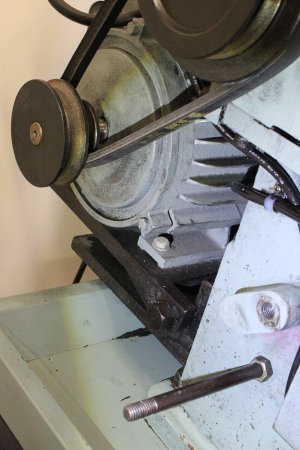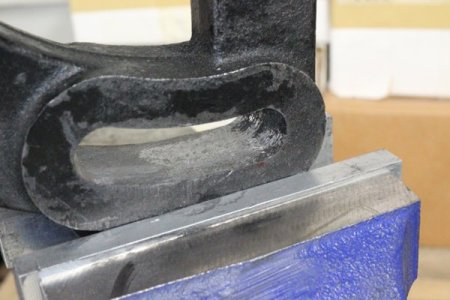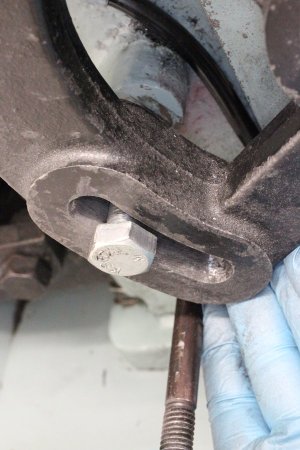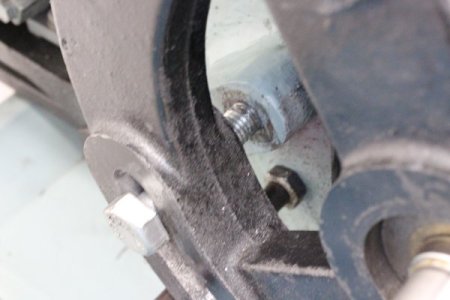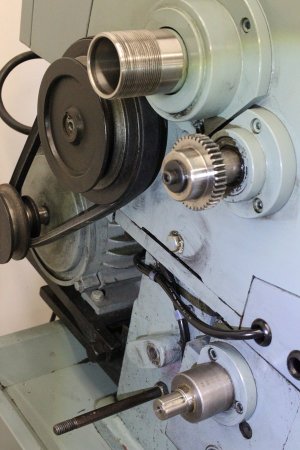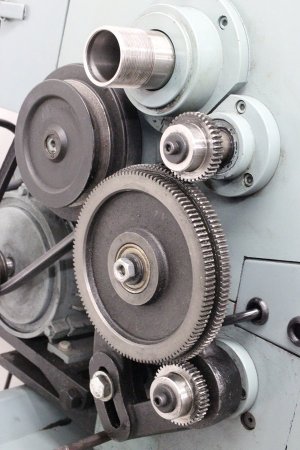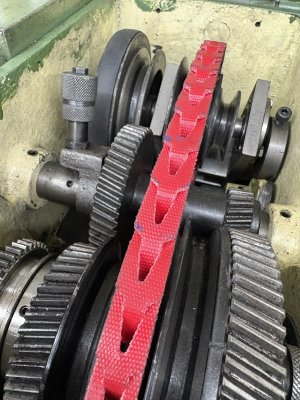I have a 12 x 36 Taiwanese gear head lathe, very similar to a Grizzly 12 x36, it’s about 40 years old and I have owned it for 8 years.
When I bought it the gearbox was not operating properly, I ended up replacing four gears and the shaft bearings in the gearbox.
I have not replaced any bearings in the gearhead assembly.
There is a vibration that varies at different speeds, most noticeable by the steel backsplash vibrating at times.
Removing the left side belt and gear shield the drive gears all look fine, are lubricated and set to not be too tight or too loose.
While running the electric motor has a bounce, the motor is bolted to a swinging mount attached to the backside of the lathe frame, gravity pulls the motor down and ‘tightens’ the rubber V belt.
I used a stethoscope to listen to the lathe spindles and bearings and there is no noticeable noise. I can watch the motor bounce slightly up and down on its pivoting frame.
When I disconnect the V belt and run the motor it is quiet.
I put a dial test indicator on the double row pulley on the lathe and it runs true on the side and in the deep V groove +/- 3-4 thou. The double row pulley is tight on the lathe input shaft.
The double row pulley on the electric motor is tight and clean and I do not feel play in the motor shaft.
The condition of the V belt looks good.
Trying to figure out why the motor has this bounce to it when connected to the V belt?
Am I missing something obvious?
The bearings in the lathe gear head are readily available, three are just standard deep groove ball bearings on the gearhead input shaft (the shaft the V belt runs to the motor) and there are two tapered roller bearings on the main spindle shaft, which I can get from my go-to online source out of Europe, 123 Bearings.
When I bought it the gearbox was not operating properly, I ended up replacing four gears and the shaft bearings in the gearbox.
I have not replaced any bearings in the gearhead assembly.
There is a vibration that varies at different speeds, most noticeable by the steel backsplash vibrating at times.
Removing the left side belt and gear shield the drive gears all look fine, are lubricated and set to not be too tight or too loose.
While running the electric motor has a bounce, the motor is bolted to a swinging mount attached to the backside of the lathe frame, gravity pulls the motor down and ‘tightens’ the rubber V belt.
I used a stethoscope to listen to the lathe spindles and bearings and there is no noticeable noise. I can watch the motor bounce slightly up and down on its pivoting frame.
When I disconnect the V belt and run the motor it is quiet.
I put a dial test indicator on the double row pulley on the lathe and it runs true on the side and in the deep V groove +/- 3-4 thou. The double row pulley is tight on the lathe input shaft.
The double row pulley on the electric motor is tight and clean and I do not feel play in the motor shaft.
The condition of the V belt looks good.
Trying to figure out why the motor has this bounce to it when connected to the V belt?
Am I missing something obvious?
The bearings in the lathe gear head are readily available, three are just standard deep groove ball bearings on the gearhead input shaft (the shaft the V belt runs to the motor) and there are two tapered roller bearings on the main spindle shaft, which I can get from my go-to online source out of Europe, 123 Bearings.

